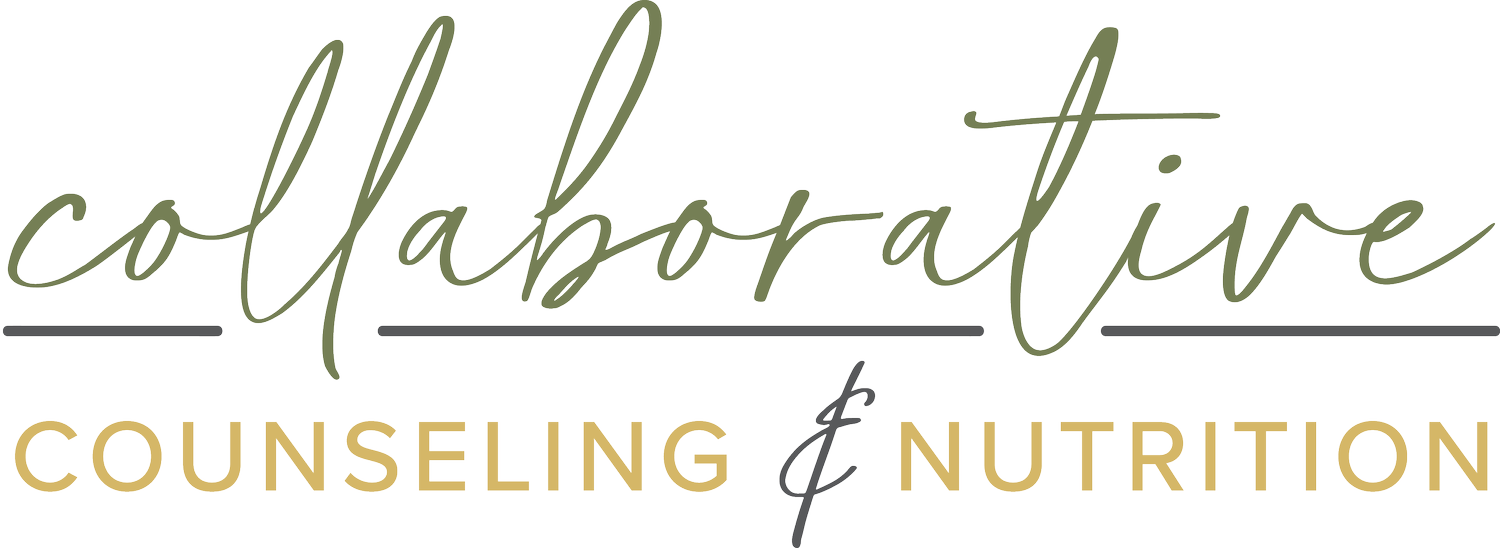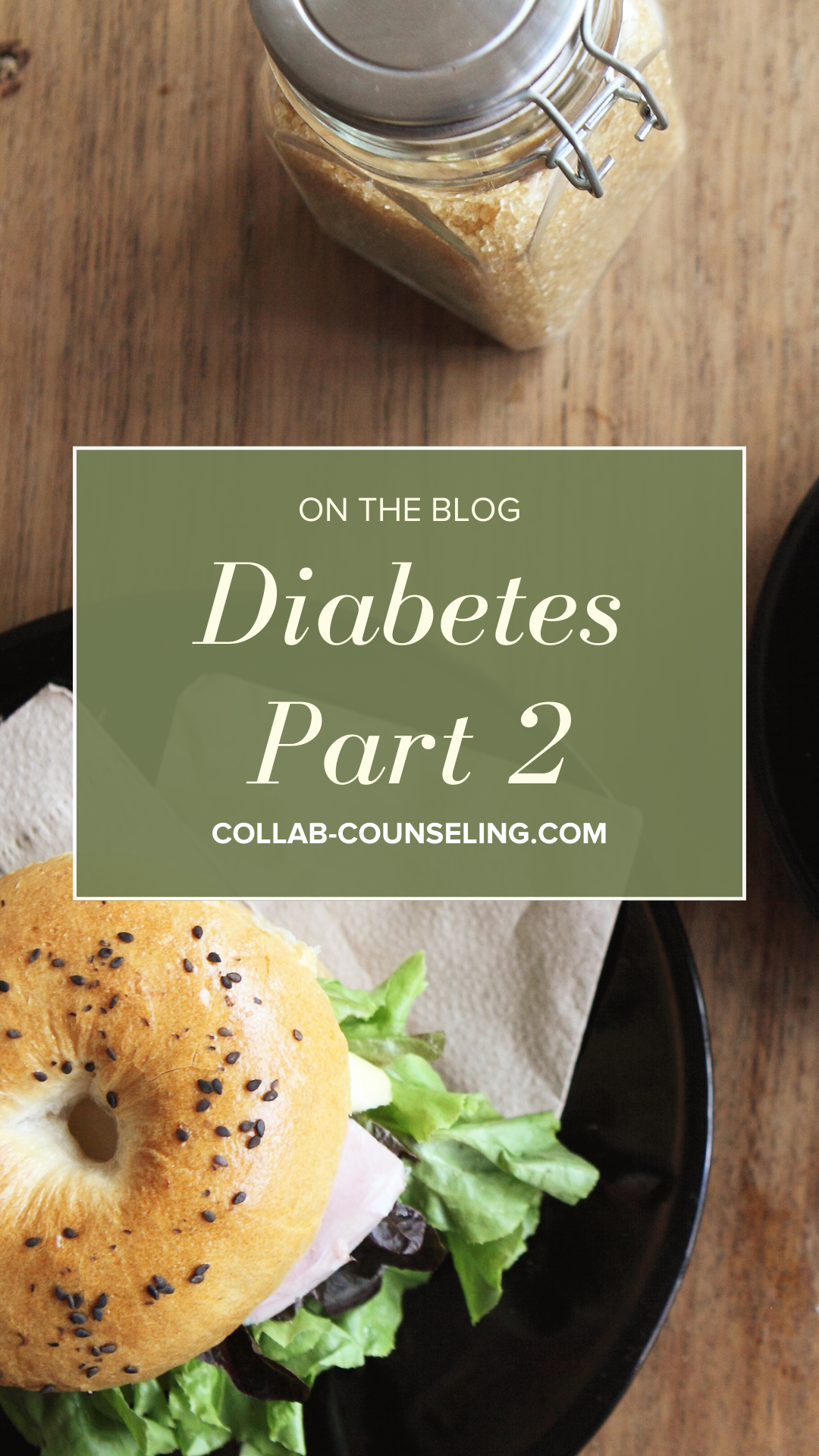Diabetes 202
We loved Allison’s Diabetes 101 post a few weeks ago and she’s back today with part 2! Today, we’ll focus more on type 2 diabetes, prediabetes, and insulin resistance. Take it away, Allison!
Type 2 Diabetes
Type 2 Diabetes Mellitus, or T2DM accounts for 90-95% of diabetic diagnoses. T2DM used to be referred to as “adult-onset diabetes”, but children and teens can be affected as well. This is a condition in which insulin is being made, but over time, the body stops being able to use insulin as effectively.
A person with T2DM may experience a blood sugar “spike” following a meal high in carbohydrates because the body can’t process the sugar as well. While some blood sugar fluctuations are normal, blood sugar stays high in T2DM, meaning some intervention is needed to help bring it down.
Management includes a variety of tools including medication, lifestyle changes, and in some cases, the use of synthetic insulin. Symptoms of T2DM are similar to symptoms of T1DM, like frequent urination, excessive thirst, and fatigue, but tend to come on more gradually in type 2.
Insulin Resistance
Insulin Resistance refers to circumstances in which the cells in the body are not able to respond to insulin as effectively. The body continues to release insulin, which can lead to high levels of insulin in the blood. Sometimes blood sugars can remain in a normal range if the body is making enough insulin to negate the effects of the weakened cell response. There are generally no symptoms associated with insulin resistance, and unlike prediabetes and diabetes, there is no single “test” to diagnose it. The risk of developing insulin resistance increases with age and is more prevalent when there is a family history of type 2 diabetes. Additionally, several other medical conditions can impact the likelihood of developing insulin resistance, including PCOS, or having a history of stroke, heart disease, high cholesterol, high blood pressure, hypothyroidism, and nonalcoholic fatty liver disease.
Insulin resistance can occur both in the short and long term. Acute insulin resistance may occur as a result of temporary medications, like steroids. Chronic insulin resistance, on the other hand, increases the likelihood of developing diabetes. We usually hear the terms insulin resistance and diabetes used in tandem. To simplify the relationship, remember you can have insulin resistance without a diabetes diagnosis, but T2DM always stems from insulin resistance.
Prediabetes
Prediabetes refers to blood sugar levels that are higher than “normal”, but lower than the diabetic range. Typically, fasting blood sugar readings between 100 – 125 mg/dL or an A1c of >5.7% but less than 6.5% is considered prediabetes. It’s essential to remember that prediabetes may or may not progress to diabetes. In fact, in older adults, it’s more common for blood sugar to return to normal than it is for a person to develop diabetes. Emerging research indicates up to 85% of people with prediabetes will not go on to develop diabetes.
Stigma & Harmful Advice
We used to simplify Type 1, saying it’s the genetic one. But we now know there is an even more significant genetic component with Type 2 diabetes. Yet, patients still get blamed for their diagnosis. Take any list of risk factors for insulin resistance for example: excess body fat around the waist is often listed first. It’s important to remember that correlation is not the same as causation. Nonetheless, weight loss is almost always recommended as the primary intervention. This not only implies we have control over where our bodies gain and lose weight (we don’t) but also suggests weight loss is guaranteed to improve our health (it’s not).
Fear and shame are tactics frequently used in medical settings to “inspire” patients to improve their health, so it makes sense that a lot of individuals with blood sugar issues are left feeling hopeless and defeated when they aren’t successful. This increases the likelihood of relying on desperate measures to see the number on the scale go down because they’ve been told that’s what counts the most. I have had patients report being praised for their weight loss only, even when their A1c also went down. I’ve had clients start an exercise routine and stop because they’ve gained a few pounds. So please remember:
When weight is viewed as the only health metric that matters, it shifts the focus away from actual health-promoting behaviors.
If any nutrition recommendations are provided, they’re often restrictive and vague. Instead of patients being asked how they manage blood sugar through their lifestyle, patients are told to “watch” the macronutrient they need the most. When we try to follow a low-carb diet, we inevitably end up eating more carbs than we might otherwise. (think: cheat days on diets). The kicker? Inconsistent carbohydrate intake ends up worsening A1c over time.
We also know intentional weight loss is not sustainable for the majority of people in the long term. This makes it even more essential to consider the medical repercussions that could follow when weight is regained, and health markers potentially worsen. Weight cycling has been identified as a strong independent predictor of new-onset diabetes and is associated with adverse cardiometabolic effects.
Want to know something even more wild? Clinical treatment and care only account for 10-20% of health outcomes, with the other 80-90% depending on social determinants of health, like employment, access to care, access to nutritious food, familial and social support, income, and education. Unfortunately, our policies and systems are not currently designed to help people with the problems they need the most help with.
Moving Forward
When we consider the shame and stigma surrounding the development and control of blood sugar issues, it isn’t surprising that individuals with diabetes are at higher risk for developing disordered eating and body dissatisfaction. If you’re struggling to understand how nutrition, movement, stress, sleep, and overall physical and mental health impact your blood sugar, our dietitians and therapists at Collaborative Counseling & Nutrition are here to help!
Resources Used:
The Cleveland Clinic. “Insulin Resistance”. The Cleveland Clinic. Retrieved on February 23, 2024 from:https://my.clevelandclinic.org/health/diseases/22206-insulin-resistance
Kakinami L, Knäuper B, Brunet J. “Weight cycling is associated with adverse cardiometabolic markers in a cross-sectional representative US sample” J Epidemiol Community Health 2020. Retrieved on April 2, 2024 from: https://jech.bmj.com/content/74/8/662
Koyama AK, Bullard KM, Pavkov ME, Park J, Mardon R, Zhang P. “Progression to Diabetes Among Older Adults With Hemoglobin A1c–Defined Prediabetes in the US”. JAMA Netw Open. 2022. Retrieved on March 18, 2024 from: https://jamanetwork.com/journals/jamanetworkopen/fullarticle/2791310
Magnan, S. “Social Determinants of Health 101 for Health Care: Five Plus Five. NAM Perspectives. Discussion Paper, National Academy of Medicine. 2017. Retrieved on April 2, 2024 from: https://nam.edu/social-determinants-of-health-101-for-health-care-five-plus-five/
National Institute of Diabetes and Digestive and Kidney Diseases. “Insulin Resistance & Prediabetes”. National Institute of Diabetes and Digestive and Kidney Diseases. Retrieved on March 18, 2024. https://www.niddk.nih.gov/health-information/diabetes/overview/what-is-diabetes/prediabetes-insulin-resistance
Richter B, Hemmingsen B, Metzendorf M, Takwoingi Y. “Development of type 2 diabetes mellitus in people with intermediate hyperglycaemia”. Cochrane Database of Systematic Reviews 2018, Issue 10. Retrieved on April 2, 2024 from: https://pubmed.ncbi.nlm.nih.gov/30371961/
US Department of Health & Human Services, Centers for Disease Control & Prevention. “Type 2 Diabetes”. Centers for Disease Control and Prevention. Retrieved on February 15, 2024 from: https://www.cdc.gov/diabetes/basics/type2.html
Zou, Huajie et al. “Association between weight cycling and risk of developing diabetes in adults: A systematic review and meta-analysis.” Journal of diabetes investigation vol. 12,4 (2021): 625-632. Retrieved on April 2, 2024 from https://www.ncbi.nlm.nih.gov/pmc/articles/PMC8015818/
Collaborative Counseling & Nutrition is an outpatient nutrition and body image counseling center, with locations in Indianapolis and Carmel, that provides compassionate, holistic eating disorder treatment. Through practicing mindfulness, intuition, and Health At Every Size, we are on a mission to help you find a true state of well-being! We take an anti-diet, weight-inclusive approach with all our clients and work to help guide you towards a way of healthy living designed by you, just for you! This post is for education purposes only and should not be used as a substitute for treatment for an eating disorder. If you are looking for a registered dietitian or therapist to assist you on your recovery journey, please reach out today!


